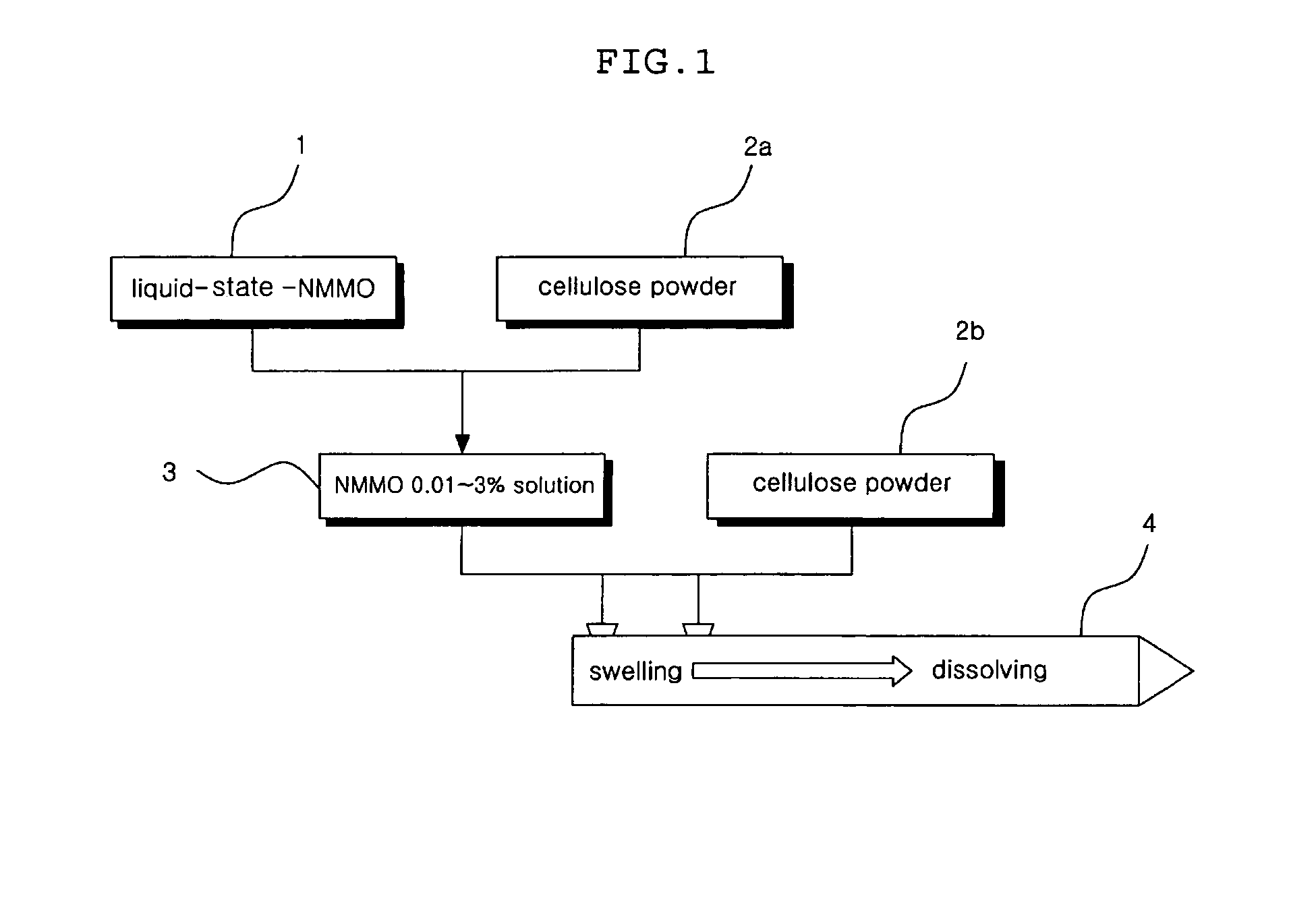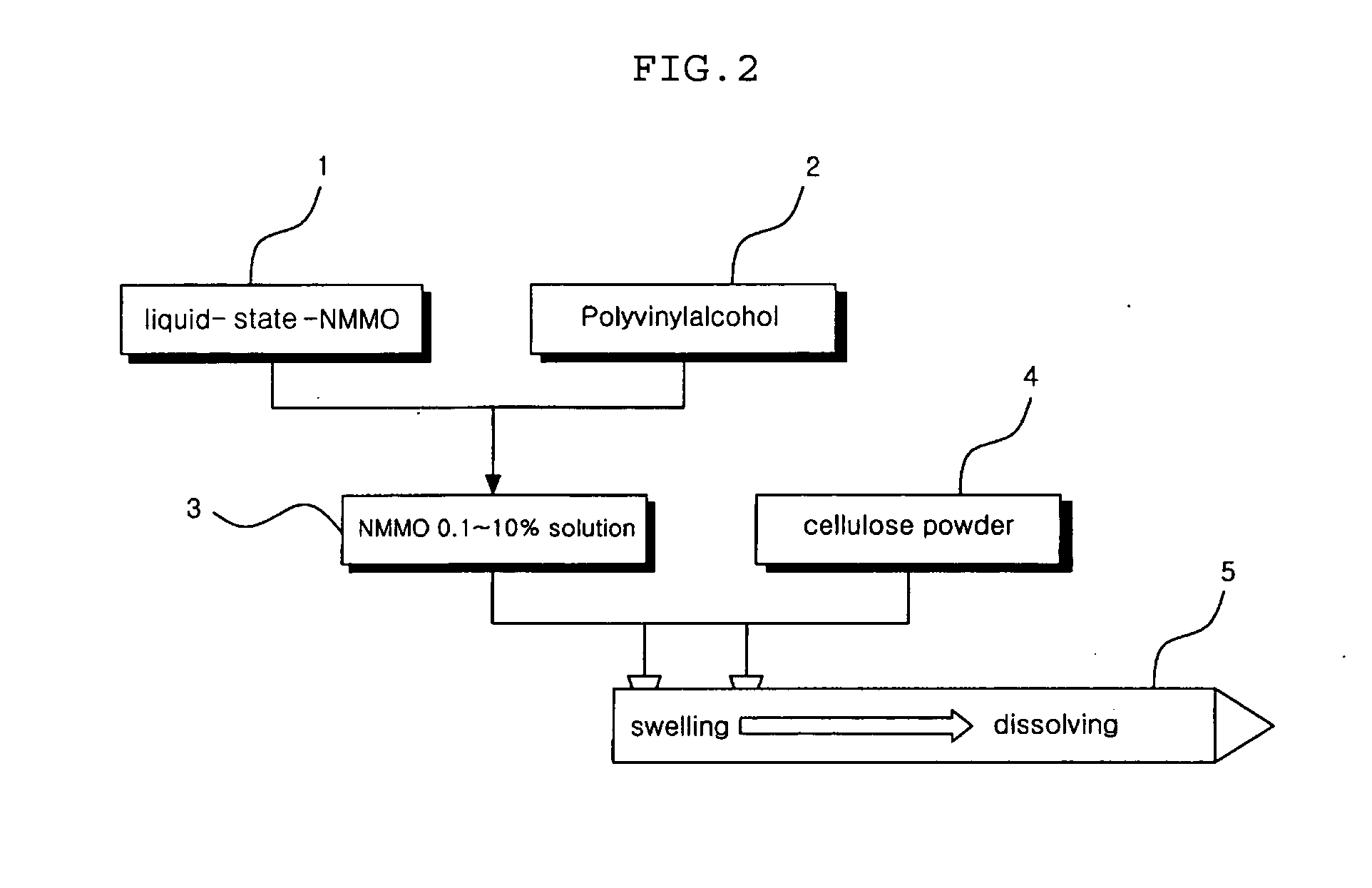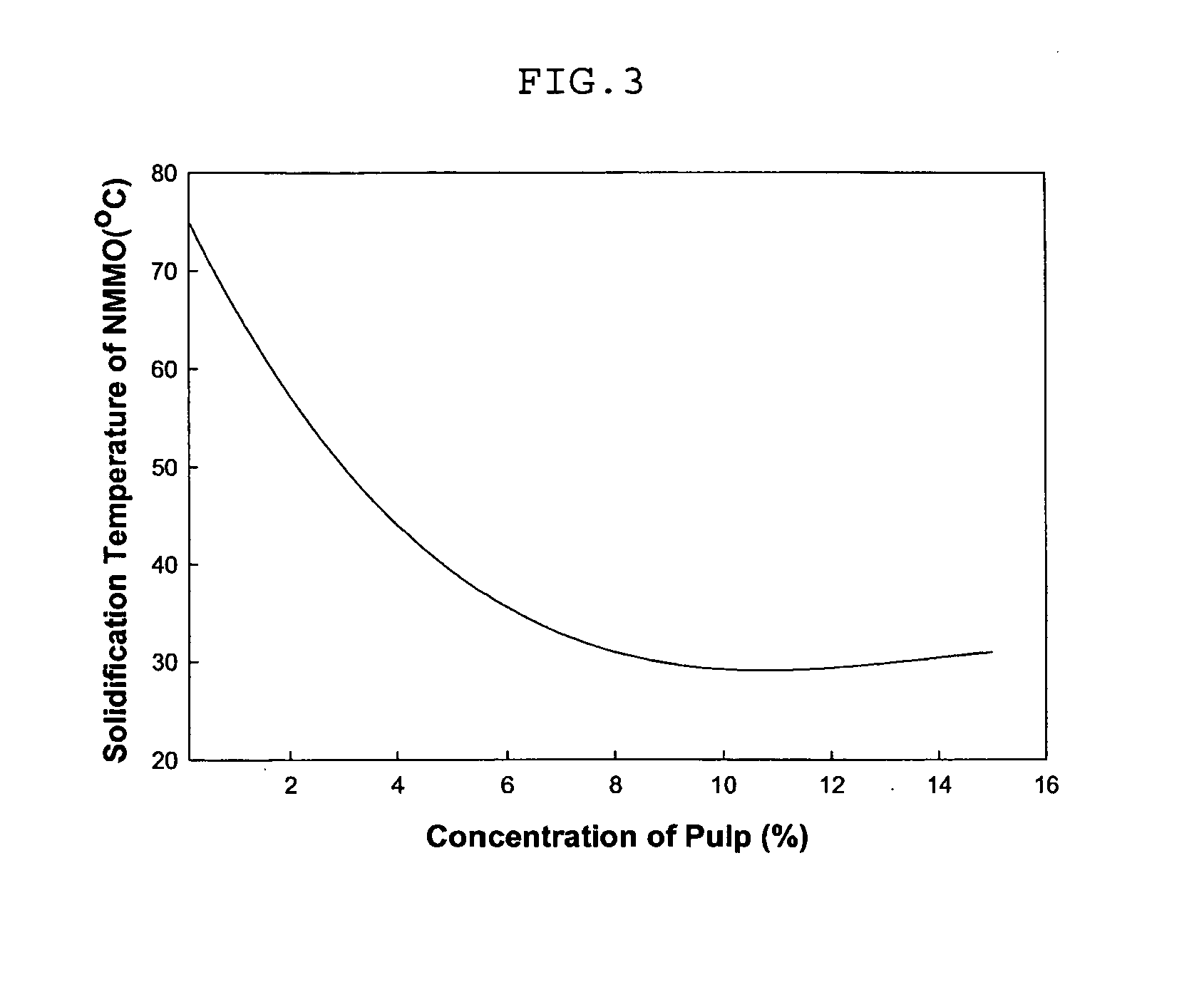Solution containing cellulose dissolved in n-methylmorpholine-n-oxide and high tenacity lyocell multifilament using the same
- Summary
- Abstract
- Description
- Claims
- Application Information
AI Technical Summary
Benefits of technology
Problems solved by technology
Method used
Image
Examples
example 1
[0088] A cellulose sheet that the weight mean degree of polymerization is 1,000 were fed into a pulverizer having a 100 mesh filter to produce cellulose powder having a particle size of less than 500 micrometers, and then, the cellulose powder were dissolved in NMMO to produce a NMMO solution containing cellulose of 1% by weight.
[0089] The NMMO solution containing the cellulose of 1% by weight was fed into an extruder (4) maintained its inner temperature at 78° C. through a geared pump at the speed of 6,900 g / hour and the cellulose powder was fed into the extruder through a screw-type feeder at the speed of 853 g / hour. The extruder was controlled to swell the NMMO solution and the cellulose powder fully by controlling them dwelling for 0.1 to 3 minutes in the swelling zone of the extruder. And then, the temperature of each block of the dissolving zone of the extruder was maintained at the range of 90 to 95° C. and operated the screw of the extruder at 200 rpm so as to extrude the f...
example 2
[0091] A cellulose sheet that the weight mean degree of polymerization is 1,000 were fed into a pulverizer having a 100 mesh filter to produce cellulose powder having a particle size of less than 500 micrometers, and then, the cellulose powder were dissolved in NMMO to produce a NMMO solution containing cellulose of 2% by weight. The NMMO solution containing the cellulose of 2% by weight was fed into an extruder maintained its inner temperature at 78° C. through a geared pump at the speed of 6,900 g / hour and the cellulose powder was fed into the extruder through a screw-type feeder at the speed of 853 g / hour. The extruder was controlled to swell the NMMO solution and the cellulose powder fully by controlling them dwelling for 0.5 to 3 minutes in the swelling zone of the extruder. And then, the temperature of each block of the dissolving zone of the extruder was maintained at the range of 90 to 95° C. and operated the screw of the extruder at 200 rpm so as to extrude the melted solut...
example 3
[0093] The solution was prepared in the same manner as described in Example 1 except that the temperature of the dissolving zone in the extruder was changed to 100° C.
[0094] Cellulose particles which were not dissolved were not nearly found in the solution. And the degree of polymerization of the cellulose is 900.
PUM
| Property | Measurement | Unit |
|---|---|---|
| Temperature | aaaaa | aaaaa |
| Temperature | aaaaa | aaaaa |
| Percent by mass | aaaaa | aaaaa |
Abstract
Description
Claims
Application Information
 Login to View More
Login to View More - R&D
- Intellectual Property
- Life Sciences
- Materials
- Tech Scout
- Unparalleled Data Quality
- Higher Quality Content
- 60% Fewer Hallucinations
Browse by: Latest US Patents, China's latest patents, Technical Efficacy Thesaurus, Application Domain, Technology Topic, Popular Technical Reports.
© 2025 PatSnap. All rights reserved.Legal|Privacy policy|Modern Slavery Act Transparency Statement|Sitemap|About US| Contact US: help@patsnap.com



